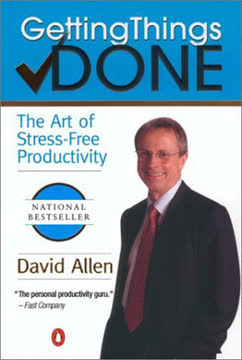Key Takeaways
1. Capture everything that has your attention
Your mind is for having ideas, not holding them.
Collect all open loops. Gather every task, commitment, and idea that's occupying your mental space. This includes personal and professional obligations, from major projects to minor errands. Use physical and digital tools like notepads, apps, or voice memos to externalize these thoughts.
Create a collection habit. Regularly empty your mind of all its contents. This practice reduces stress and mental clutter, allowing you to focus on what's truly important. By capturing everything, you free up mental bandwidth and ensure nothing falls through the cracks.
Trust the process. Initially, this may feel overwhelming as you confront the volume of your commitments. However, getting everything out of your head is the first step towards gaining control and clarity. Remember, you're not committing to doing everything you capture, just acknowledging its existence.
2. Clarify the desired outcome and next action for each item
The secret of getting ahead is getting started. The secret of getting started is breaking your complex overwhelming tasks into small manageable tasks, and then starting on the first one.
Define clear outcomes. For each item you've captured, determine what "done" looks like. This clarity helps your brain focus on achieving the desired result rather than just thinking about the problem.
Identify next actions. Break down each outcome into specific, physical actions. Ask yourself, "What's the very next action I need to take to move this forward?" This step transforms vague ideas into concrete, doable tasks.
Examples of next actions:
- Call John about project timeline
- Draft outline for presentation
- Research flight options for upcoming trip
3. Organize reminders into a trusted system
Your ability to generate power is directly proportional to your ability to relax.
Create a reliable organizational system. Develop a structure that allows you to store and retrieve information easily. This might include digital tools like task management apps or physical systems like file folders.
Categorize by context. Group tasks based on where or how they can be completed. Common categories include:
- @Computer
- @Phone
- @Errands
- @Home
- @Office
Maintain separate lists. Keep distinct lists for different types of items:
- Next Actions: Immediate, concrete tasks
- Projects: Multi-step outcomes
- Waiting For: Items delegated to others
- Someday/Maybe: Ideas for the future
4. Regularly review and update your system
It is easier to act yourself into a better way of feeling than to feel yourself into a better way of action.
Conduct a weekly review. Set aside time each week to review and update your system. This habit ensures your lists remain current and relevant.
Weekly review process:
- Gather all loose papers and materials
- Process your notes
- Review previous calendar data
- Review upcoming calendar
- Review action lists
- Review project lists
Maintain perspective. Use this time to evaluate your commitments at different horizons, from ground-level actions to life goals. This practice helps you stay aligned with your broader objectives while managing day-to-day tasks.
5. Take action on your most important tasks
Luck affects everything. Let your hook always be cast; in the stream where you least expect it there will be a fish.
Implement the two-minute rule. If a task takes less than two minutes, do it immediately. This principle prevents small tasks from piling up and clogging your system.
Use the four-criteria model for choosing actions:
- Context: What can you do given your current location and available tools?
- Time available: How much time do you have before your next commitment?
- Energy available: What level of mental and physical energy do you have?
- Priority: Given the above factors, what's the most important thing to do?
Trust your intuition. Once you have a clear overview of your commitments and next actions, trust your gut when deciding what to work on. Your mind is freed to make intuitive choices when it's not cluttered with unprocessed inputs.
6. Master the art of stress-free productivity
There is one thing we can do, and the happiest people are those who can do it to the limit of their ability. We can be completely present. We can be all here. We can... give all our attention to the opportunity before us.
Achieve mind like water. Strive for a state of readiness and flexibility, like water adapting to any container. This mindset allows you to respond appropriately to whatever life throws at you, without overreacting or underreacting.
Eliminate psychic drag. By capturing and clarifying all your commitments, you remove the subtle stress caused by uncompleted tasks and unclear obligations. This frees up mental energy for focused work and creativity.
Practice outcome thinking. Regularly visualize successful outcomes for your projects and goals. This habit primes your brain to notice opportunities and solutions that align with your desired results.
7. Transform your approach to work and life
How do I know what I think, until I hear what I say?
Shift from managing time to managing focus. Instead of trying to squeeze more into each day, concentrate on directing your attention effectively. This approach recognizes that energy and attention, not just time, are crucial resources.
Embrace the "next action" mindset. Train yourself and those around you to always identify the next physical, visible action required to move something forward. This habit prevents procrastination and keeps projects flowing.
Cultivate a bias towards action. Develop the habit of taking immediate action on small tasks and making quick decisions on next steps for larger projects. This proactive approach builds momentum and confidence.
Create a low-resistance trusted system. Design your organizational system to be so simple and enjoyable to use that you naturally engage with it. The easier it is to capture, clarify, and review, the more likely you are to maintain the system.
Last updated:
FAQ
What's "Getting Things Done: The Art of Stress-Free Productivity" about?
- Overview: "Getting Things Done" by David Allen is a guide to organizing tasks and commitments to achieve stress-free productivity. It introduces a system to manage work and life efficiently.
- Main Focus: The book emphasizes capturing all tasks and commitments in a trusted system outside the mind, clarifying actions, and organizing them for review and execution.
- Purpose: It aims to help individuals clear their minds of clutter and focus on completing tasks effectively, providing a structured approach to managing tasks, projects, and responsibilities.
- Target Audience: Ideal for anyone feeling overwhelmed by their workload, from executives to homemakers, offering practical advice to regain control and clarity.
Why should I read "Getting Things Done"?
- Improved Productivity: The book offers practical techniques to enhance productivity by organizing tasks and reducing stress, helping readers focus on what truly matters.
- Stress Reduction: By capturing tasks in a trusted system, it alleviates the mental burden of remembering tasks, leading to a calmer, more focused mind.
- Universal Applicability: The principles can be applied to both personal and professional life, making it a versatile resource for improving organizational skills.
What are the key takeaways of "Getting Things Done"?
- Capture Everything: Collect all tasks, ideas, and commitments in a reliable system to prevent mental clutter and allow for better focus.
- Clarify Actions: Define the next physical action required for each task to prevent procrastination and ensure steady progress.
- Regular Review: Consistent review of tasks and projects is crucial to maintaining control and focus, with a recommended weekly review to update and organize commitments.
How does the GTD system work?
- Five Stages: The GTD system consists of five stages: capture, clarify, organize, reflect, and engage, each designed to help manage tasks efficiently.
- Capture Everything: Collect all tasks, ideas, and commitments in a trusted system outside your head to free up mental space.
- Clarify and Organize: Determine the next action for each task and organize them into appropriate categories for review and execution.
What is the "mind like water" concept in "Getting Things Done"?
- Definition: "Mind like water" is a state of relaxed control where you respond appropriately to any situation without overreacting or underreacting.
- Achieving the State: By capturing, clarifying, and organizing tasks, you can achieve this state, allowing you to focus on the present moment and make better decisions.
- Benefits: This state leads to increased productivity, reduced stress, and a greater sense of well-being, as you are no longer burdened by mental clutter and unfinished tasks.
What is the "Natural Planning Model" in "Getting Things Done"?
- Five Phases: The Natural Planning Model consists of defining purpose and principles, outcome visioning, brainstorming, organizing, and identifying next actions.
- Purpose and Vision: Start by defining the purpose and envisioning the successful outcome of a project, providing direction and motivation.
- Brainstorming and Organizing: Generate ideas and organize them into a coherent plan, identifying the next actions required to move the project forward.
How can "Getting Things Done" help with procrastination?
- Next-Action Clarity: The book emphasizes defining the next physical action required for each task, reducing hesitation and encouraging progress.
- Breaking Tasks into Steps: Allen's method involves breaking down projects into manageable steps, making them less daunting and building momentum.
- Regular Review and Organization: Regular reviews help keep priorities clear and manageable, avoiding the last-minute rush that often results from procrastination.
How does the "two-minute rule" work in "Getting Things Done"?
- Definition of the Rule: If a task can be completed in two minutes or less, it should be done immediately to prevent small tasks from accumulating.
- Application in Daily Life: The rule can be applied to tasks like responding to emails or making quick phone calls, encouraging prompt action.
- Benefits of the Rule: It leads to a significant reduction in clutter and an increase in productivity by quickly clearing minor tasks.
What are some of the best quotes from "Getting Things Done" and what do they mean?
- "Your mind is for having ideas, not holding them." Emphasizes freeing the mind from remembering tasks to enhance creativity and problem-solving.
- "The art of resting the mind..." Highlights the value of achieving a clear mind, free from stress and mental clutter, to enhance productivity and well-being.
- "You can do anything, but not everything." Reminds to prioritize tasks and focus on what truly matters, rather than trying to do everything at once.
How can I implement the GTD system in my daily life?
- Start with Capturing: Begin by collecting all tasks, ideas, and commitments in a trusted system outside your head using tools like notebooks or digital apps.
- Clarify and Organize: Determine the next action for each task and organize them into appropriate categories for review and execution.
- Regular Review: Set aside time each week to review and update your system, ensuring it remains functional and up-to-date.
What tools and systems does "Getting Things Done" recommend for organization?
- In-Baskets and Filing Systems: Use physical or digital in-baskets to capture all incoming tasks and information, and maintain a well-organized filing system.
- Action Lists and Calendars: Maintain action lists categorized by context and use a calendar for time-specific tasks and appointments.
- Digital Tools: Apply GTD principles using modern digital tools like task management apps and digital calendars, integrating them into a cohesive system.
How can "Getting Things Done" be applied in a team or organizational setting?
- Shared Language and Practices: Adopt a shared language and practices for task management, improving communication and collaboration.
- Accountability and Clarity: Define next actions and outcomes clearly to enhance accountability and avoid misunderstandings within a team.
- Cultural Shift: Promote a focus on productivity and efficiency, reducing stress and improving task management for better results and a positive work environment.
Review Summary
Getting Things Done receives mostly positive reviews for its practical productivity system. Many readers find it life-changing, praising its methods for organizing tasks, clearing mental clutter, and reducing stress. The book's emphasis on capturing ideas, processing inboxes, and identifying next actions resonates with many. Some criticize its corporate focus and outdated elements, while others find it unnecessarily long and repetitive. Overall, readers appreciate the actionable advice and report increased efficiency and mental clarity after implementing the GTD system.
Similar Books
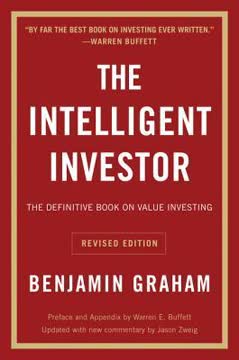
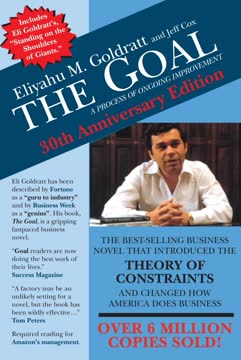
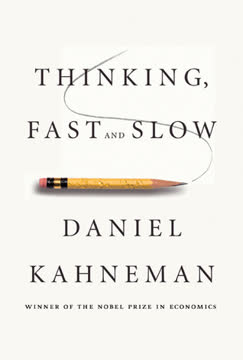
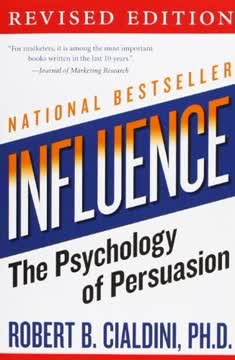


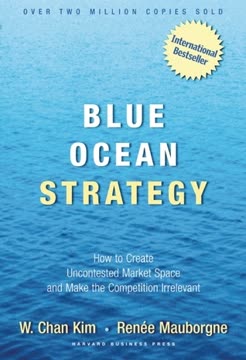
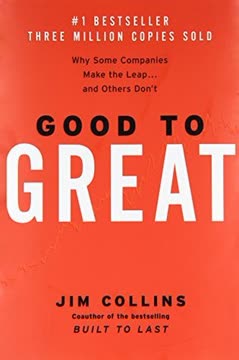
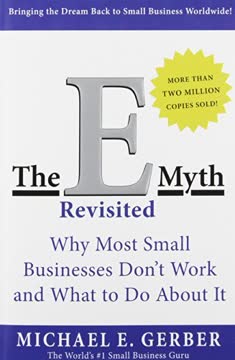
Download PDF
Download EPUB
.epub digital book format is ideal for reading ebooks on phones, tablets, and e-readers.
